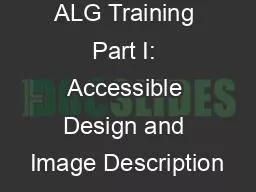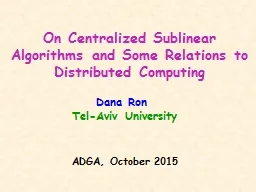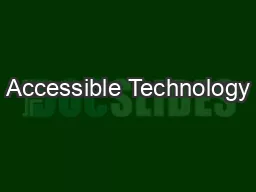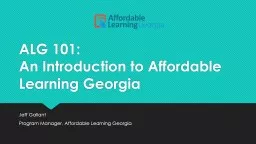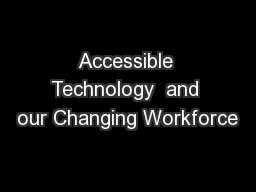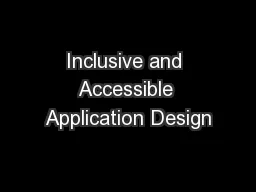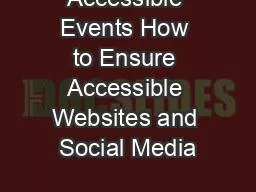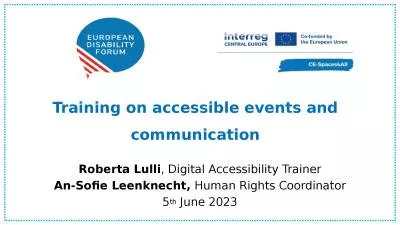PPT-ALG Training Part I: Accessible Design and Image Description
Author : dardtang | Published Date : 2020-08-04
Presenter Valerie Morrison PhD Etext Manager CIDI AMAC and CATEA the College of Designs largest research centers have joined to create the Center for Inclusive Design
Presentation Embed Code
Download Presentation
Download Presentation The PPT/PDF document "ALG Training Part I: Accessible Design a..." is the property of its rightful owner. Permission is granted to download and print the materials on this website for personal, non-commercial use only, and to display it on your personal computer provided you do not modify the materials and that you retain all copyright notices contained in the materials. By downloading content from our website, you accept the terms of this agreement.
ALG Training Part I: Accessible Design and Image Description: Transcript
Download Rules Of Document
"ALG Training Part I: Accessible Design and Image Description"The content belongs to its owner. You may download and print it for personal use, without modification, and keep all copyright notices. By downloading, you agree to these terms.
Related Documents

